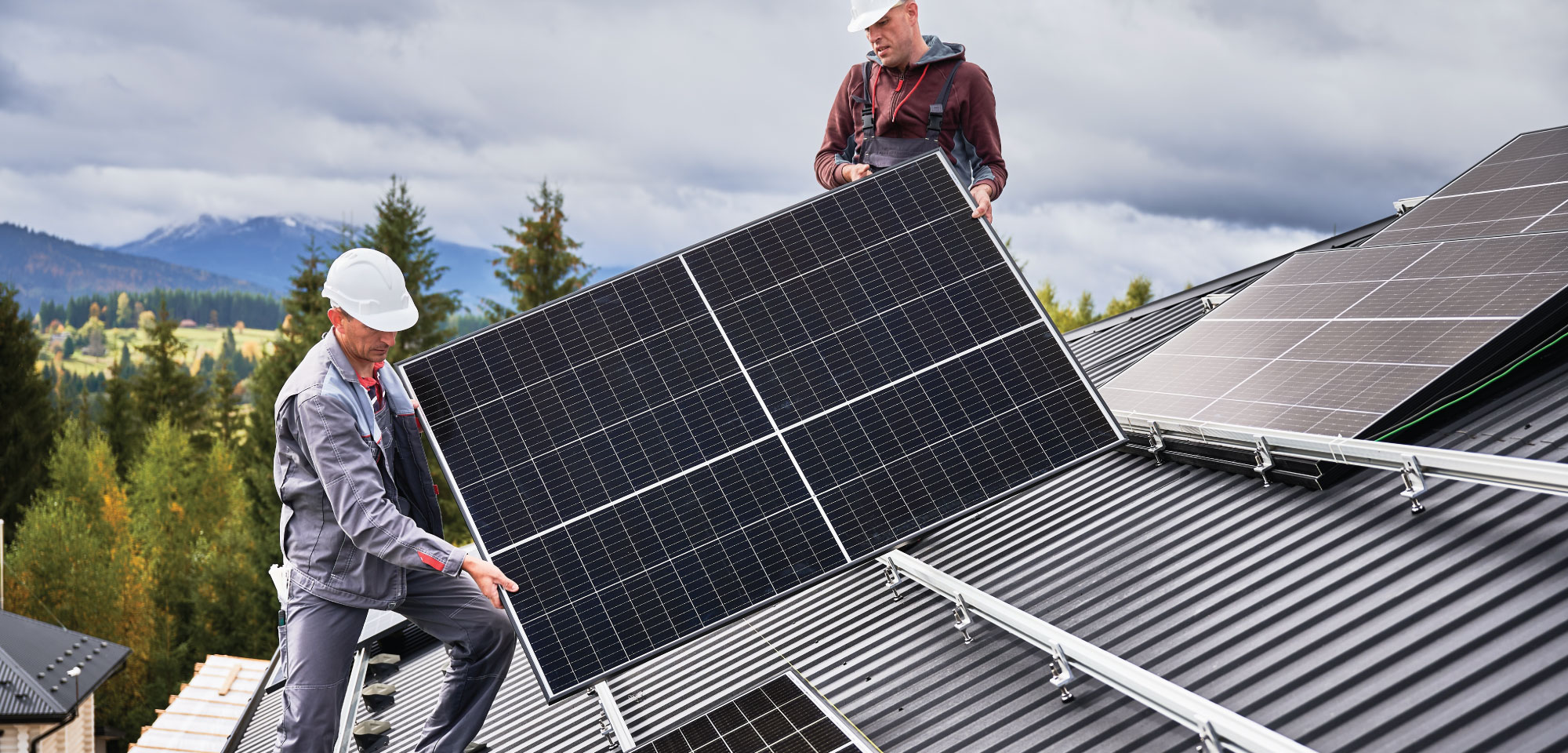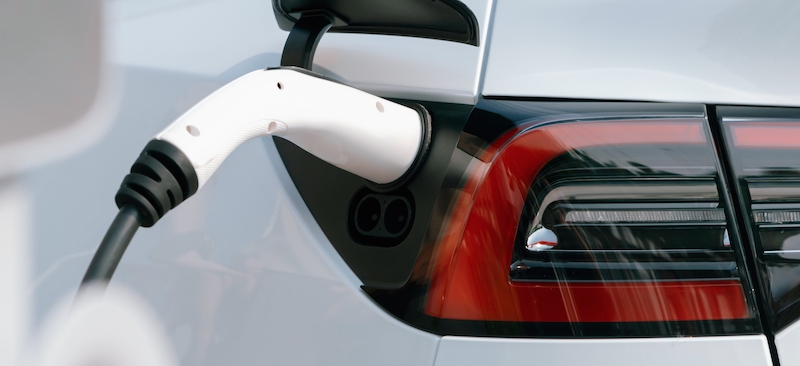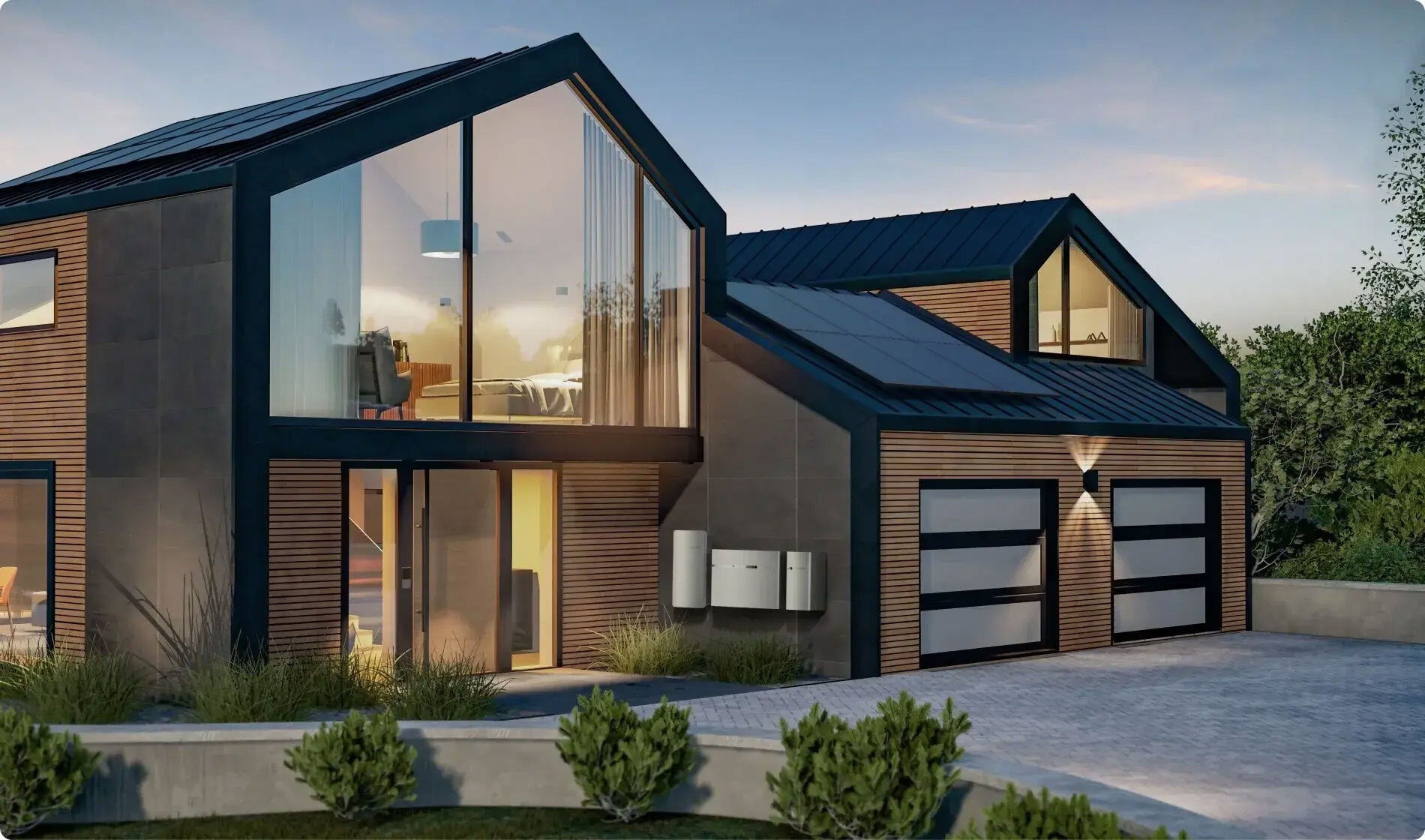Updated 10 months ago
Adding solar panels to an existing system: What you need to know
Written by
Ana Almerini

Find out what solar panels cost in your area
Sometimes, you’ll outgrow the original solar system installed on your roof, and you might need to add some more panels to meet your additional electricity needs. Some common reasons to expand your solar panels are getting an electric vehicle, installing a battery, electrifying your home, or making home upgrades like an addition or a new pool.
You may not know where to begin if you think you need more solar. Don’t worry - we cover everything you need to know about adding more solar panels to your existing solar system and if it’s always the right choice.
Key takeaways
-
Your electricity needs might outgrow your original solar power system, especially if you electrify your home and get an electric vehicle.
-
Adding between five and ten panels is usually enough to cover increased electricity usage, but it ultimately depends on how your usage has changed.
-
Do not add more solar panels to your system if your roof is old, it is a leased system, or if you do not have enough roof space for extra panels.
-
Contact your original solar installer to add more panels to your system.
Why add solar panels to an existing solar system?
When you first get solar panels, the system is designed to install the right amount of solar panels to offset your historic electricity usage. If you start using more electricity after you go solar, you may need more panels to offset that additional electricity usage.
In general, our electricity usage stays pretty consistent over time. But, some home upgrades may increase how much energy a home needs to run. Some common changes that may lead you to want more solar panels include getting an electric vehicle, installing battery storage, or electrifying your home.
Upgrade | Est. additional panels needed |
|---|---|
Electric vehicle | 5 panels |
Battery storage* | 0 to 6 panels |
Whole home electrification | 10+ panels |
*Estimated panels needed to generate enough excess energy to charge one battery daily.
Electric vehicles

Charging an EV will increase your electricity bill and how many solar panels you need to cover the costs.
EVs typically use about 375 kWh to charge every month. If you didn’t have an EV when you originally sized your solar system, you probably won’t generate enough solar energy to cover the cost of charging your car.
You could charge your car from the grid, but solar panels are the cheapest way to “fill up” your EV. Powering your car with the grid costs about $830 per year versus just about $200 per year when you charge an EV with solar panels.
On average, you’d need to install five solar panels to charge your EV. The actual number of panels you’ll need will depend on which electric car you have and your driving habits.
Solar battery storage

Unless you install a very large battery system, you probably won’t need many, if any, additional panels to recharge it. Image source: Enphase
Solar batteries store any extra power your panels produce for future energy needs. If the battery’s capacity is higher than how much excess energy your solar panels typically produce, you may want to consider a few more panels to charge the battery fully.
You can think of a battery as an extra appliance - if there isn’t enough solar power to charge it, it has to charge from the grid. So, if you want your battery system to run completely off solar power, you may need more panels. But it depends on what you’re using your battery storage for.
If you are planning to add a battery to avoid high prices on time of use rates or just want a source of backup power for an occasional blackout, you probably won’t need additional solar panels if you have an average-sized 10 kWh battery. If the battery you plan to install is bigger than 10 kWh, then more panels may be needed to charge it completely with solar.
The following table outlines some of the most popular solar batteries offered by installers according to Statistics from our Solar Industry Survey and how many extra panels would need to be added to a typical solar system to fully charge them with excess solar energy:
Solar battery model | Battery capacity | Est. additional panels needed to charge |
|---|---|---|
10 kWh | 0 | |
10 kWh | 0 | |
13.5 kWh | 3 | |
15 kWh | 4 | |
16 kWh | 4 |
If you live somewhere that experiences prolonged power outages and you want a large battery system to run your appliances for extended periods, you’ll need a lot of batteries and a lot of solar panels. Adding one Tesla Powerwall costs about $15,500, including installation, and that doesn't include the cost of additional panels!
The best way to know how many batteries and how many extra panels you need is by contacting a local solar installer.
Electrifying your home
Whole-home electrification is becoming increasingly popular. When you electrify your home, you replace your old gas-powered appliances with electric ones, like induction stovetops and heat pumps for HVAC systems.
If you switch to all electric-run appliances after installing a solar system, you will need more panels to run your home on solar power only. As with most things, the amount of panels you will need when electrifying your home depends on which appliances you switch over.
Changing major appliances like your stove, clothes dryer, and water heater could require ten solar panels. Still, it ultimately depends on the size of your home, what electric appliances you get, and how you use them.
Install as many solar panels as you can initially! “[Add-ons] are complex for a variety of reasons, and most of the time, more complicated than installing a new system,” Carlos Beeccar from Energy Concepts, a solar company in California, tells us. “Our pitch to our customer is to install as much as possible or is reasonable for the start.” By installing more panels from the get-go, you avoid some of the hassles of finding an installer to do the job, getting equipment that works with your existing system, and messing with the electrical equipment. Some utilities limit oversizing, so this might not be an option for everyone.
How much does adding solar panels to an existing system cost?
Unfortunately, there is no one-size-fits-all answer to what adding new panels will cost, but in general, you can expect it to be around the same average cost to install solar, about $3.00 per watt. The following table outlines an estimated cost for installing additional solar panels to your existing system:
Number of additional panels* | Est. cost before incentives |
|---|---|
5 panels | $6,000 |
6 panels | $7,200 |
7 panels | $8,400 |
8 panels | $9,600 |
9 panels | $10,800 |
10 panels | $12,000 |
*Assumes 400-watt panels
Adding new panels is not as simple as propping up a few more on an old system. The new panels need their own permits, interconnection agreements, racking, inverters, and installers' time - at least a crew of two installers.
The bottom line is that adding more panels to your system is a significant cost. It’s up to you to decide if the extra savings are worth the upfront cost and hassle of getting more panels.
What to consider when adding more panels
It may seem simple, but getting more solar panels is more difficult than you think. There are a few things to consider before you add more solar panels to your roof.
Do you own your panels?
If you have a solar lease, your roof is probably already covered in all the solar panels it can fit. The company that owns your panels likely put as many solar panels as possible on your roof to get the maximum amount of incentives.
However, if that’s not the case, you would still have to work with your leasing company to see if they would be willing to expand the system size. They likely won’t get too much benefit from adding a few more panels, so they might not go through the trouble. It’s also a headache for you - will paying slightly less to your lease company be worth the trouble of updating a contract?
If you own your system or pay for it with a loan, adding panels to your existing system makes more sense, as it’s your system, so you don’t have to worry about contracts and lease payments.
Roof space
Depending on the size of your home, you might not even have enough space to add a few more panels. Even if you have enough room, it might not be ideal roof space for installing solar. If the open roof area is shaded or doesn’t face the right direction for solar panels, installing more panels there probably won’t be worthwhile.
Contact your original installer to ask about roof sizing and placement of new panels.
The quality and characteristics of the original system
Solar technologies evolve rather quickly, and it can be tricky to find new panels that can integrate with your existing system, especially if it’s over three years old.
Wiring the system safely can also be difficult. If your original system has a string inverter, it might not handle the load from additional panels, causing you to need a new inverter. Adding panels to a system with microinverters will be a little easier, but you still have the same equipment issues mentioned above.
Your solar installer will have a better idea of how worthwhile it will be to add panels based on the characteristics of your system.
Cost of adding panels
Adding panels might be a financial burden you are not ready to take on. If you live in a location with high electricity rates or want to rely on renewable energy as much as possible, the price of installing additional panels could be worth it for you.
Adding more panels will save you more money, but if the amount you have to spend is worth what you get in added savings is ultimately up to you. Additional solar panels can pay themselves back in around 10 to 11 years but ultimately depend on your area's electricity rates and solar panel production.
Are there incentives for adding additional panels?
Yes, there are some incentives you can claim when you add more solar panels to your roof, but they are limited. If you already claimed the federal tax credit when you initially installed your system, you can only claim it again on the added cost of the additional panels.
State and local rebates will have different rules and regulations when it comes to expanding a solar system; your installers should be able to point you in the right direction.
Keep in mind that adding panels may impact how your utility bills you for solar. Many utilities used to offer full retail net metering, where solar energy fully offsets the cost of energy purchased from the grid.
Many utilities have updated how solar customers are credited for excess energy. So, if you were under one net metering plan and upgraded your system, you may get switched to the current rules.
Take California, for example. Before April 2023, Californians who were customers of the state’s investor-owned utilities got nearly the full retail rate for the energy they sent to the grid. If you installed solar panels under the old net metering policy and expand your system by more than 10% or 1 kilowatt (kW), you’ll be moved to the new program, Net Billing, or NEM 3.0, resulting in lower solar savings.
Use your original installer to add more panels
Working with your original solar installer is the best way to get more panels on your roof. Your initial installer will be comfortable with your system, know which permits you must apply for when adding panels, and what equipment will pair best with your existing system.
If your solar installer went out of business or they aren’t willing to take on your project, finding a new installer to help you out can be difficult. They might be unfamiliar with the wiring and not want to be blamed for any damage that could take place when upgrading an unfamiliar system. The cost of the job might also not make the project worth it to a new installer.
Can you install additional panels yourself?
It is technically possible to install additional panels yourself, but we don’t recommend it. Installing your own solar panel system is dangerous, as with any project involving electrical work.
DIY installations also mean you must handle permitting yourself, which can be a lot of time and paperwork. Unless your original system is a DIY install, doing any upgrades yourself will likely void manufacturer and installer warranties.
Although it might seem easier and cheaper, it's generally best to stick with a professional versus trying to handle a DIY install.
Is adding more solar panels to your system right for you?
If it is important to you to run your home upgrades, from all-electric appliances to adding an EV on renewable energy, you should consider contacting your original solar installer to add more panels to your system.
But if the cost of this addition, not to mention the potential hassle of the paperwork and installation itself, is not worth it, just know that you will need to pay more to your utility company. Either option is perfectly valid; it just depends on what is important to you.
Install as many solar panels as possible from the start to save yourself a huge headache in the long run when you decide to get an electric vehicle or upgrade your appliances. To get started, use our solar calculator to get an idea of how many solar panels you need as you use more energy.
Ana is the Marketing & Communications Manager at SolarReviews, working within the solar industry since 2020. With a Master's in Climate and Society and professional experience in marketing, she helps communicate the value of solar to homeowners and build awareness of the SolarReviews brand. On weekends you can find her at the Jersey shore, reading a book from the ever-increasing stack on her side table, or eating food someone else cooked....
Learn more about Ana Almerini